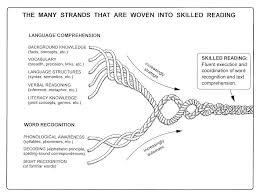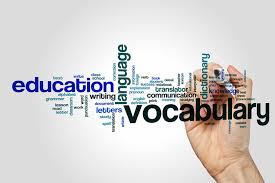 Figure 1 Scarborough’s Reading Rope, 2001 Figure 1 Scarborough’s Reading Rope, 2001 As a classroom teacher, with a little bit of experience under my belt, I used data and feedback from peers to drive my instruction. It was important to me to not only feel like I was an effective educator, I wanted to “look good on paper” too. I mean, it is one thing to hear administrators and other teachers talk about how effective you are as an educator, but if the data doesn’t reflect that then you have to ask yourself; “Am I really doing right by my students?” So, here was my epiphany! I guess it was about year 16 or 17 as an educator. I was thinking I am a fabulous educator and looking at my data and discovering that even my brightest students were not scoring well in vocabulary. That is when I realized that I didn’t know as much as I thought about teaching reading and more specifically, vocabulary instruction. I made it my mission that day to learn about how and why we should teach vocabulary in the early grades. I made vocabulary instruction my SMART (specific, measurable, attainable, timely) goal, my SLO (student learning outcome) goal and the focus of my graduate studies. I focused my time and energy on learning all I could about what vocabulary instruction was and why is was important to teach. Why Teach Vocabulary? Well, the biggest thing I can think of is the fact that words carry meaning, so like Arthur Draper and Gerald Mueller said in 1971; “we think with words, therefore to improve thinking; teach vocabulary”. I had to learn more about why it was important to teach vocabulary so, I began to research. The link between vocabulary knowledge and comprehension is very clear. No one can argue that students would not be able to comprehend the text they read if they don’t understand the words they are reading. In fact, vocabulary knowledge in reading is one of the best predictors of school success for most students whether their first language is English or not (Cooter, 2010; Solari, Aceves, Higareda, Richards-Tutor, Filippini, Gerber, & Leafstedt, 2014). One thing I have found encouraging is that although there is debatably a knowledge, learning, and education gap and although children do begin school knowing a different and varying about of words, Tanya Wright and Susan Neuman (2014) say that a good vocabulary instruction intervention can make reading struggles better later on and can help get students on track by 4th grade. As a second grade teacher, I found it imperative that I begin teaching children vocabulary acquisition strategies and teaching them as much as I could about words and their meanings. I now know that it is important to have vocabulary instruction in the early grades to help students acquire and use these skills while they are learning to read because of what Chall and Jacobs (1983) call the “fourth grade slump”. The slump describes the dip in (scores) reading ability of fourth grade students because of the change in academic language and rigor of fourth grade content as reading instruction shifts from “learning to read” with its emphasis on understanding words and decoding to “reading to learn” with its emphasis on comprehending text at increasingly challenging rates. What is the Science of Reading? It seems as of late, that the phrases “science of reading” or the “science of teaching reading” have become buzz words, but what do these phrases really mean? Is reading or teaching reading a science? Indeed it is! Timothy Shanahan said that any real science of reading would include methods, approaches that have been found, through research to give kids a learning advantage in reading. If you ask some people what the science of teaching reading is, some will tell you that it is “teaching phonics”. Others will say they don’t really know. I will admit that until recently I had not even heard of the phrase at all, but my pursuit of knowledge about effectively teaching vocabulary brought me right to it. The science of reading or of teaching reading is basically the idea that I, as an educator use what research says is best for children, to teach them how to read. It pulls from brain research and from teacher’s practices as well as from what college professors, linguistic experts, reading specialists, and other experts all have proven from research studies and observations of classroom teaching. I had to dig into what others have shown and proved to work in order to learn what best to do for my students. I have had to digest ideas like the Simple View of Reading and the Reading Rope to see how to teach reading and to see how vocabulary instruction fit into the idea of skilled reading. The ideas are explained below. The Simple View of Reading In 1986, Philip Gough and William Tunmer developed a theory to explain the idea of skilled reading. They say that skilled reading is the product of word recognition and language comprehension. To learn more about the simple view check out this site: https://www.readingrockets.org/article/simple-view-reading. What I find interesting about this idea is that it can be used to explain why students have reading difficulties. It also can show why it is important to have a reading program that has a balance of portion of both word recognition and language comprehension instruction. It is important to note that this does not mean 50% and 50%. It means that your classroom instruction have the correct balance of each of these. In the early grades students are spending more time “learning to read” so the bigger portion of time might be spent in word recognition strategies rather than language comprehension, but language comprehension should not be ignored. I can use Hollis Scarborough’s Reading Rope to explain the idea with more detail. Scarborough’s Reading Rope In 2001 Hollis Scarborough used the model of an intertwined rope to illustrate what skilled reading looks like. The strands weave into two bigger strands, labeled similar to the components of the above mentioned Simple View —word recognition and language comprehension — and eventually into one woven rope that represents skilled reading . Each strand unwoven correlates to a part of what skilled reading is. The bottom portion of the rope represents the components of word recognition which are phonological awareness, decoding and sight recognition which all become increasingly automatic as they interconnect toward skilled reading. The top portion of the rope represents the components of language comprehension which are background knowledge, vocabulary, language structures, verbal reasoning, and literacy knowledge and become increasingly strategic as they interconnect toward skilled reading. How Does Vocabulary Instruction fit? Vocabulary knowledge falls under the language comprehension strand according to the Reading Rope (2001). It consists of aspect of knowing what a word means in order to comprehend texts that are read and/or heard. Our knowledge of a word’s meaning becomes increasingly strategic the more we are exposed to that word and words that are related to that word. In order to know a word we must know a lot about it. We should know the words part of speech, the words meaning in context, and well as how to read the word when we see it in print. Teaching students words, word meanings and strategies for figuring out meaning of unfamiliar words is very important because understanding word meanings is an important part of reading comprehension. Vocabulary instruction is a way to help students begin to know more words and to figure out the meaning of words that they don’t know. Understanding the importance of vocabulary instruction in reading comprehension is crucial. Starting vocabulary instruction when students are “learning to read” in the early grades is a good way to ensure that students will have those crucial skills with they are “reading to learn” in late elementary where some students fall prey to what Jeanne Chall and Vicky Jacobs call the 4th grade slump (1983). To better understand the terms reading to learn and learning to read, I will refer to the reading rope again. The reading rope is sectioned into language comprehension and word recognition as I have mentioned above. Thinking about how children learn to read we understand that they must learn sounds, letters, and decoding and blending to begin to learn words. This all happens in the word recognition portion of the reading rope so we start there and word recognition becomes more automatic as children learn more (learning to read). It is important to note that the stands in the rope do intertwine and connect so, although we should begin with word recognition that does not mean that we teach our way from word recognizing to language comprehension, it mean that as our students gain automatic word reading skills, we are teaching language comprehension and word meanings first in isolation and then in context. As word recognition is becoming more automatic language comprehension is becoming more strategic. At this point, reading instruction shifts focus from learning to read to reading to learn. Then, teachers focus more on comprehension of increasingly challenging text and strategies that help students with comprehension, like vocabulary instruction. Vocabulary instruction, early and intentionally can help combat the knowledge gap students may come to school with. Keith Stanovich, coin the phrase “the Matthew Effect” in 1986. The Mathew Effect “the rich get richer” from Matthew in the bible. This idea says that children with poor reading ability tend to continually struggle; but children who have good reading ability, maintain, and grow their reading ability throughout their schooling. Good vocabulary instruction can combat these struggles and with time reverse them. What does this mean for Teachers? Again, like the Simple View of reading, the Reading Rope details how word recognition and language comprehension come together to show skilled reading; but what is interesting about the Reading Rope is that it lays out each of the components in much greater detail and our Texas standards for reading/language arts are aligned to the strands. All components come together, either increasingly strategic (language comprehension) or increasingly automatic (word recognition) but begin as skills introduced and learned in isolation. Because each component is truly meant to be performed in an interconnected way, once a skill or set of skills is learned (Introduced explicitly and systematically, modeled by the teacher, and practiced by the students) students should be allowed to practice the skills not only in isolation but also in the context of authentic reading and writing opportunities
0 Comments
Leave a Reply. |
AuthorPearl Garden, Ed.D has completed her dissertation research involving understanding the vocabulary instruction practices of early grade teachers. She has a passion for the new and novice educator, and it is her goal to help educators tackle the achievement gap with her research findings. She will use this blog to share what she has learned in “pearls of literacy”. The ideas come from her dissertation titled “A Content Analysis of the Vocabulary Instruction Habits by Early Grade Teachers”. Archives
May 2024
Categories |

 RSS Feed
RSS Feed